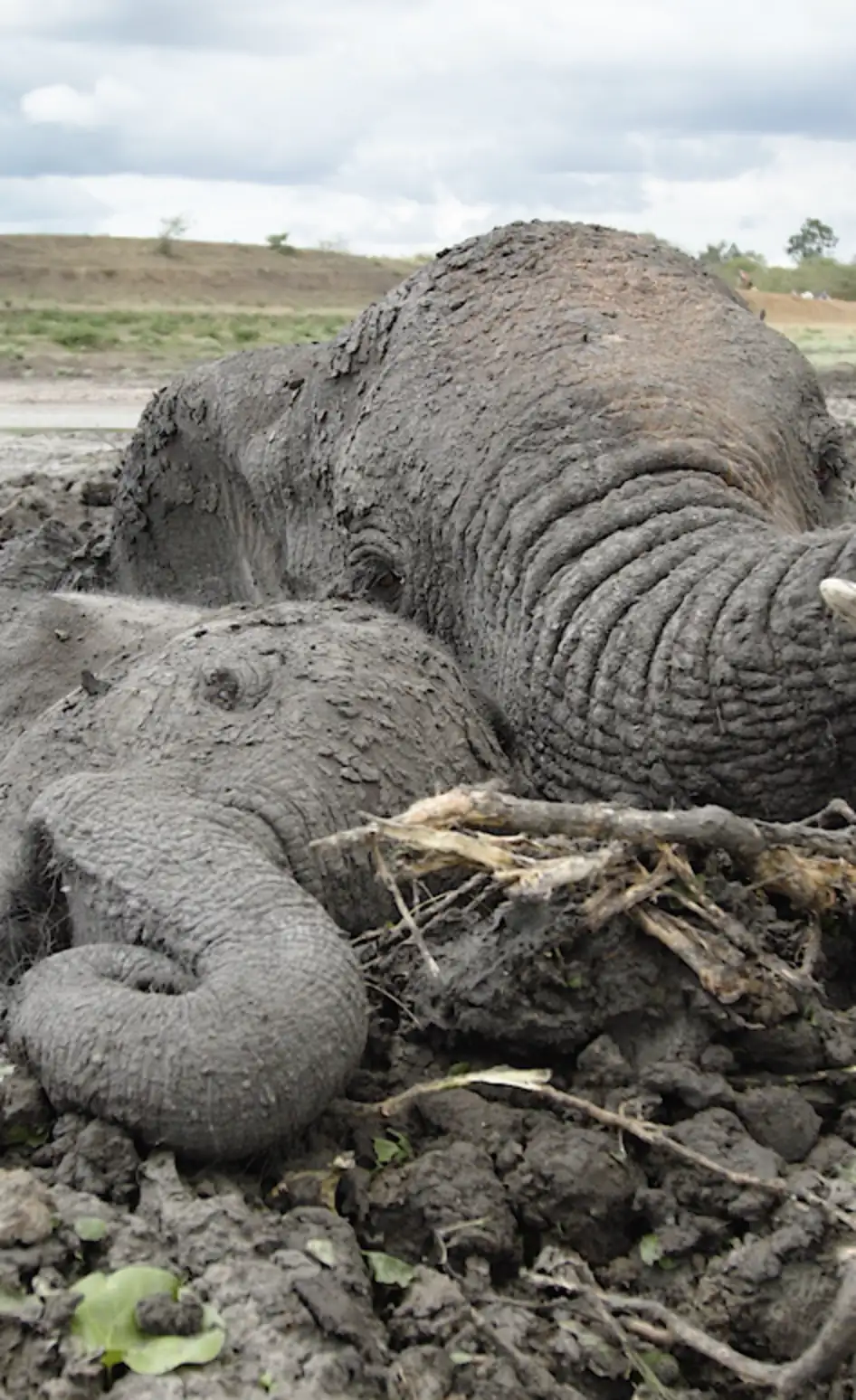They were like this for two days 🥺
In 2022, amid one of Kenya’s harshest droughts, a mother elephant wandered the parched landscape in search of water. Her 5-month-old calf followed closely, trusting her to lead the way. When they spotted what appeared to be a watering hole, hope surged — but the promise of relief quickly turned into danger.
Instead of water, the pair had stumbled into a deep stretch of thick, clinging mud. The mother, heavy and already weakened by the drought, lost her footing and sank. As she struggled to rise, the mire only gripped her tighter. Her calf tumbled in beside her, equally trapped. For two long days, under the scorching sun, the mother kept her baby close, unable to escape but determined to protect him.
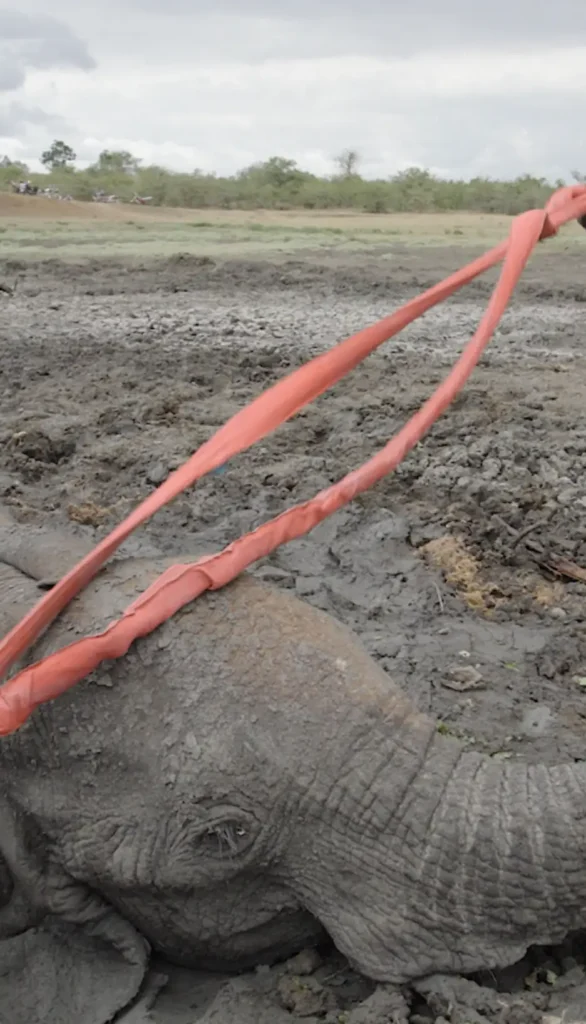
The Sheldrick Wildlife Trust (SWT) learned of their plight from the Kenya Wildlife Service and Wildlife Works, who had spotted the trapped elephants. SWT’s rescuers knew the spot well — they had freed two other elephants there just days earlier.
When the team arrived, the calf was weak from hunger, and his mother was severely dehydrated. Attempts to free the baby were met with fierce resistance; the mother shielded him with her trunk, unwilling to let anyone near. While elephants often sense when humans are helping, this protective mama wasn’t taking chances.
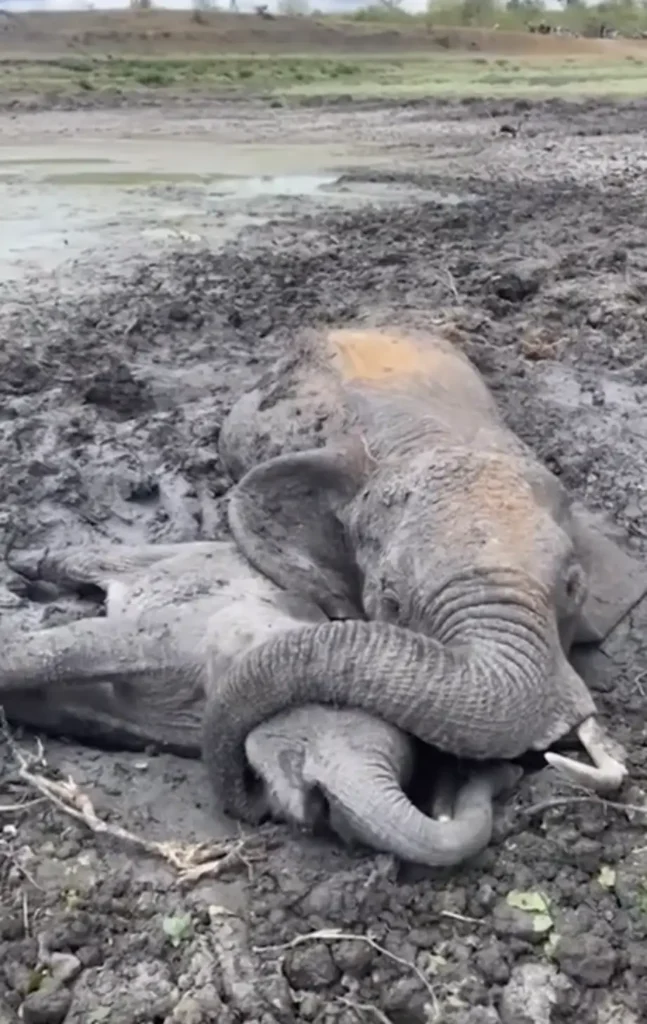
The veterinary team made the difficult choice to sedate her for everyone’s safety. Once the calf was pulled free, he refused to leave his mother’s side, crying and trying to return to her. To continue the rescue, the team gently sedated him as well.
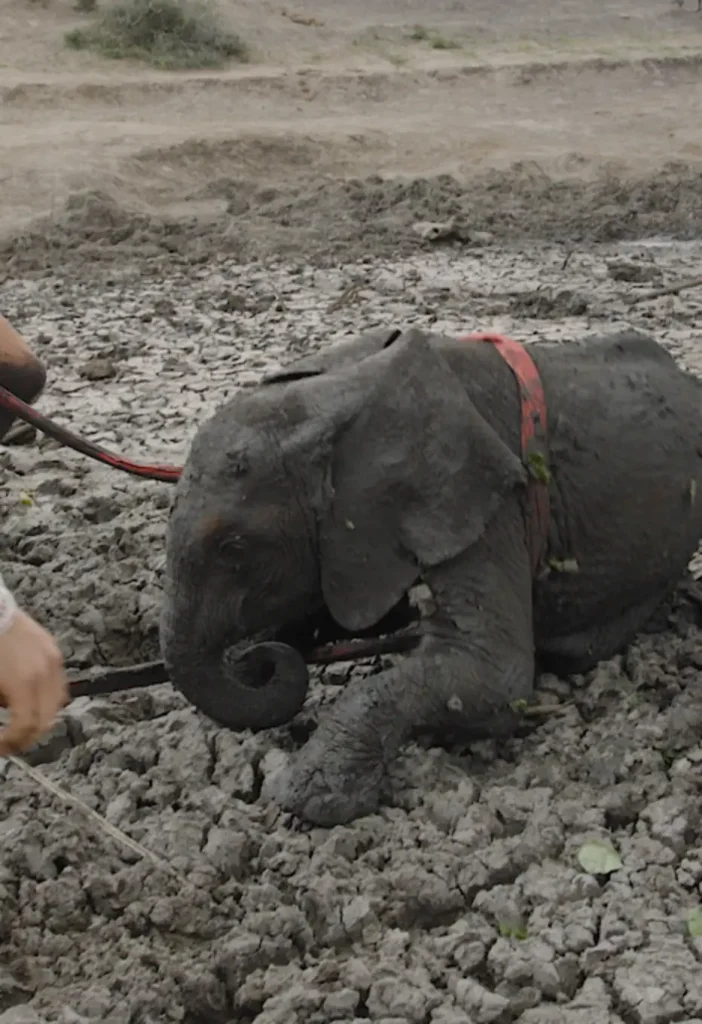
It took hours of digging and the combined force of a tractor and two land cruisers to haul the mother out of the mud. Against the odds, both emerged without injuries, though they were weak and desperately thirsty.
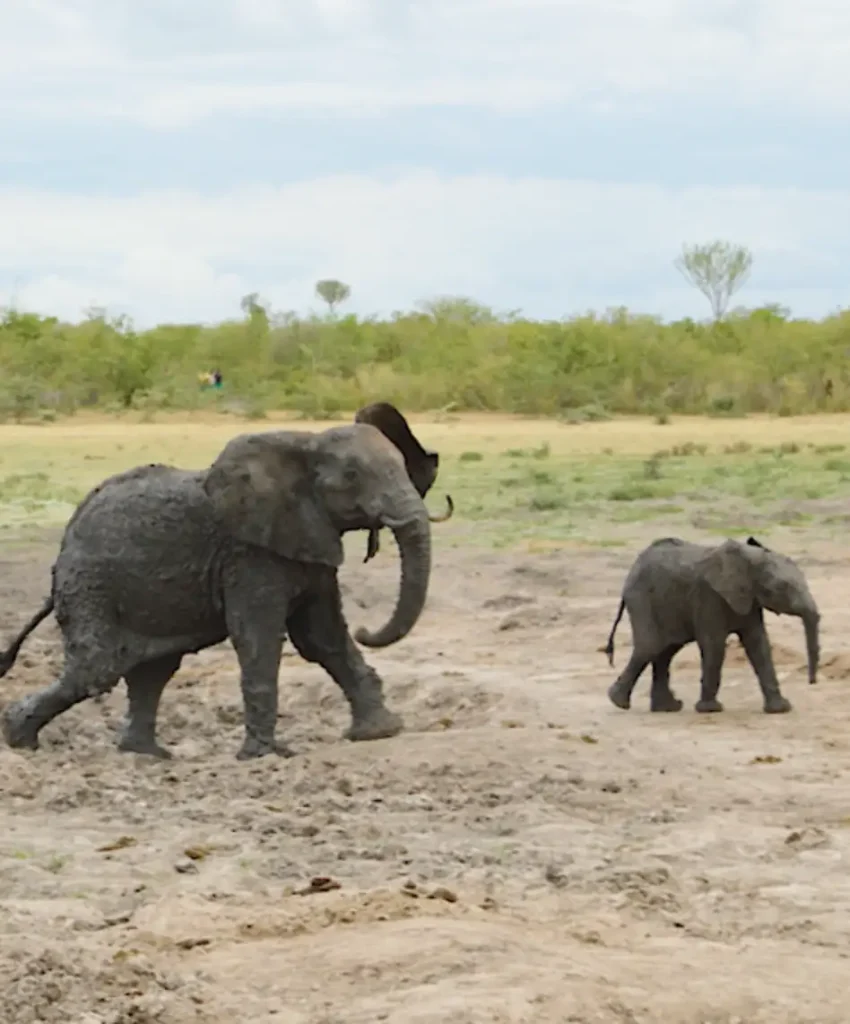
When the calf awoke, he immediately rushed to his mother, nudging her until she stirred. As soon as she regained her footing, the two set off together — the calf leading the way this time, guiding her away from the dangerous pit.
Their story didn’t end there. Inspired by the ordeal, SWT collaborated with the local chief and county officials to make the site safer for wildlife while preserving its use as a water source for the community.
